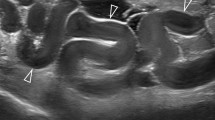Abstract
Bulk semen analysis is a highly valuable diagnostic tool used to evaluate the infertile male. Yet despite its importance, it often remains poorly understood. A basic understanding of the epidemiology of the infertile male is needed to best interpret bulk semen analysis. Its accurate interpretation allows the urologist to initiate a more efficient treatment plan. Using multiple semen parameters improves the urologist’s ability to more accurately discriminate between fertile and infertile men. We review the basic epidemiology of the infertile male and discuss the accurate interpretation of semen analysis.
Similar content being viewed by others
References and Recommended Reading
Thonneau P, Marchand S, Tallec A, et al.: Incidence and main causes of infertility in a resident population (1,850,000) of three french regions (1988–1989). Hum Reprod 1991, 6:811–816.
MacLeod J: The male factor in fertility and infertility; an analysis of ejaculate volume in 800 fertile men and in 600 men in infertile marriage. Fertil Steril 1950, 4:347–361.
MacLeod J, Gold RZ: The male factor in fertility and infertility. IV. Sperm morphology in fertile and infertile marriage. Fertil Steril 1951, 5:394–414.
MacLeod J, Gold RZ: The male factor in fertility and infertility. II. Spermatozoon counts in 1000 men of known fertility and in 1000 cases of infertile marriage. J Urol 1951, 66:436–449.
Guzick DS, Overstreet JW, Factor-Litvak P, et al.: Sperm morphology, motility, and concentration in fertile and infertile men. N Engl J Med 2001, 345:1388–1393.
Niederberger CS: Understanding the epidemiology of fertility treatments. Urol Clin North Am 2002, 4:829–840.
Owen DH, Katz DF: A review of the physical and chemical properties of human semen and the formulation of a semen simulant. J Androl 2005, 4:459–469.
Shetty Licht R, Handel L, Sigman M: Site of semen collection and its effect on semen analysis parameters. Fertil Steril 2007, In press.
Appell RA, Evans PR: The effect of temperature on sperm motility and viability. Fertil Steril 1977, 12:1329–1332.
Levitas E, Lunenfeld E, Weiss N, et al.: Relationship between the duration of sexual abstinence and semen quality: analysis of 9489 semen samples. Fertil Steril 2005, 83:1680–1686.
De Jonge C, LaFromboise M, Bosmans E, et al.: Influence of the abstinence period on human sperm quality. Fertil Steril 2004, 82:57–65.
Keel BA, Stembridge TW, Pineda G, Serafy NT Sr: Lack of standardization in performance of the semen analysis among laboratories in the United States. Fertil Steril 2002, 78:603–608.
Menkveld R, Wong WY, Lombard CJ, et al.: Semen parameters, including WHO and strict criteria morphology, in a fertile and subfertile population: an effort towards standardization of in-vivo thresholds. Hum Reprod 2001, 6:1165–1171.
Goldstein M, Schlossberg S: Men with congenital absence of the vas deferens often have seminal vesicles. J Urol 1988, 140:85–86.
Daudin M, Bieth E, Bujan L, et al.: Congenital bilateral absence of the vas deferens: clinical characteristics, biological parameters, cystic fibrosis transmembrane conductance regulator gene mutations, and implications for genetic counseling. Fertil Steril 2000, 74:1164–1174.
Sigman M: Male infertility: absent of low-volume ejaculate. In Cambell-Walsh’s Urology. Edited by Wein AJ. Philadelphia: Saunders Elsevier Press; 2007:609–653.
Kuligowska E, Baker CE, Oates RD: Male infertility: Role of transrectal US in diagnosis and management. Radiology 1992, 185:353–360.
Purohit RS, Wu DS, Shinohara K, Turek PJ: A prospective comparison of 3 diagnostic methods to evaluate ejaculatory duct obstruction. J Urol 2004, 171:232–235.
Meacham RB, Hellerstein DK, Lipshultz LI: Evaluation and treatment of ejaculatory duct obstruction in the infertile male. Fertil Steril 1993, 59:393–397.
Schoor RA, Elhanbly S, Niederberger CS, Ross LS: The role of testicular biopsy in the modern management of male infertility. J Urol 2002, 167:197–200.
Ferlin A, Arredi B, Speltra E, et al.: Molecular and clinical characterization of Y chromosome microdeletions in infertile men: a 10-year experience in Italy. J Clin Endocrinol Metab 2007, 92:762–770.
Jarow JP, Sharlip ID, Belker AM, et al.: Best practice policies for male infertility. J Urol 2002, 167:2138–144.
Nabi G, Asterlings S, Greene DR, Marsh RL: Percutaneous embolization of varicoceles: outcomes and correlation of semen improvement with pregnancy. Urology 2004, 63:359–363.
Marmar JL, Agarwal A, Prabakaran S, et al.: Reassessing the value of varicocelectomy as a treatment for male subfertility with a new meta-analysis. Fertil Steril 2007, 88:639–648.
Francavilla S, Pelliccione F, Cordeschi G, et al.: Ultrastructural analysis of asthenozoospermic ejaculates in the era of assisted procreation. Fertil Steril 2006, 85:940–946.
Gubin DA, Dmochowski R, Kutteh WH: Multivariant analysis of men from infertile couples with and without antisperm antibodies. Am J Reprod Immunol 1998, 39:157–160.
Vicari E: Effectiveness and limits of antimicrobial treatment on seminal leukocyte concentration and related reactive oxygen species production in patients with male accessory gland infection. Hum Reprod 2000, 15:2536–2544.
Nallella KP, Sharma RK, Aziz N, Agarwal A: Significance of sperm characteristics in the evaluation of male infertility. Fertil Steril 2006, 85:629–634.
Bonde JP, Ernst E, Jensen TK, et al.: Relation between semen quality and fertility: a population-based study of 430 first-pregnancy planners. Lancet 1998, 352:1172–1177.
Gunalp S, Onculoglu C, Gurgan T, et al.: A study of semen parameters with emphasis on sperm morphology in a fertile population: An attempt to develop clinical thresholds. Hum Reprod 2001, 16:110–114.
Muller CH: Rationale, interpretation, validation, and uses of sperm function tests. J Androl 2000, 21:10–30.
Jedrzejczak P, Taszarek-Hauke G, Hauke J, et al.: Prediction of spontaneous conception based on semen parameters. Int J Androl 2007, In press.
Author information
Authors and Affiliations
Corresponding author
Rights and permissions
About this article
Cite this article
Pimentel, H., Niederberger, C. A practical update on bulk semen analysis. Curr sex health rep 5, 36–40 (2008). https://doi.org/10.1007/s11930-008-0007-8
Published:
Issue Date:
DOI: https://doi.org/10.1007/s11930-008-0007-8




